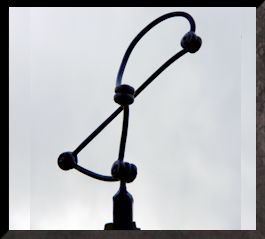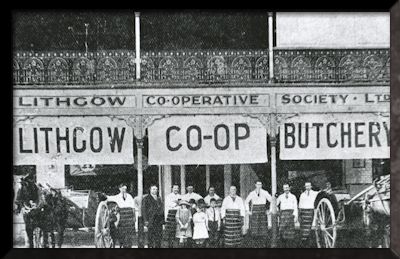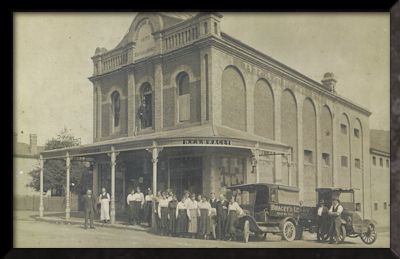|
|
|
|
||||||
|
|
LITHGOW CO-OPERATIVE SOCIETY FORMED
As Ray Christison has pointed out, mining communities needed to develop strong systems of self-help and social organisation, and the Lithgow Co-operative Society was part of this tradition. It was also an example of what labour historian Greg Patmore has called ‘localism’. This was a parochialism, or close-knittedness, that was drawn from the town’s industrial base. The mines and the iron and steel industry provided employment and income, but community and political bonds grew from the family, neighbourhood and working relationships. Part of this localism was labour organisation: the unions, lodges and associations and the Workmen’s Club. Friendly Societies were also prevalent, and worked as a form of insurance for health and other emergencies. And then there was the Co-op, which was a force to be reckoned with in Lithgow until 1980. The first Co-op started in 1891 and ran for three years but closed due to the effects of the 1890s Depression. It was revived by miners, including Robert Pillans, in 1901. Members paid a subscription, for which they received tokens for bread and other items. They received discounts and, if times were good, refunds. However the Co-op’s fortunes were closely tied to that of the town: when the Lloyd copper mine closed in 1908, the store suspended trading because most members were out of work. Although run by unionists, the Co-op was also vulnerable to strike tactics:
Over time, the Co-op became one of the largest and most prosperous in NSW. It provided for almost all the needs of its community, being both a store and supplier, and a credit union and financial service. It had 22 stores in the Lithgow region and ran farms, orchards, abattoirs, pharmacies, butchers, bakers and provided clothing, iron mongery and a range of other items. The Co-operative was a major part of the lives of the women of Lithgow, who bought from it and worked for it. It even had a beauty salon and staged fashion shows. Incidentally, the other major retailing force in Lithgow, Bracey’s, was also linked to the labour movement, as Horace Bracey was a Labor councillor. SOURCES Lithgow Co-operative Society Research Group, The Life & Times of the Lithgow Co-op: a social and industrial history 18910-1980, 2001 Ray Christison, A Light in the Vale: Development of the Lithgow District Miner’s Mutual Protective Association 1875-1900, 2011 Greg Patmore, ‘Industry, Labour and Community, 1869-1932’ in Fire, Furnace and Forge, 2006 and Main Street Lithgow, 1869-1932 |
|
||||||
|
|
|
|



